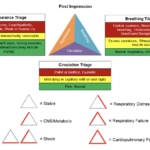If you ask the average person on the street to describe “life support,” they will generally speak of scenes from medical dramas with one of the characters hooked up to a bunch of steadily beeping machines. This is only one aspect of life support. Life support is actually a broad range of medical practices that encompasses everything from cardiopulmonary resuscitation (CPR), to dialysis, to heart or lung bypass surgery. In cases of an emergency, life support begins before the patient even arrives at the hospital.
Emergency medical personnel undergo advanced cardiac life support training and pediatric advanced life support training in order to be able to conduct life support on the way to a medical facility. This training enables them to make fast, appropriate decisions about which equipment and practices will prove most effective with regards to saving a patient’s life. While it is common to think of life support as something that happens in the hospital, the most important part of it is what happens between the scene of the accident and the patient’s arrival in the emergency room.










